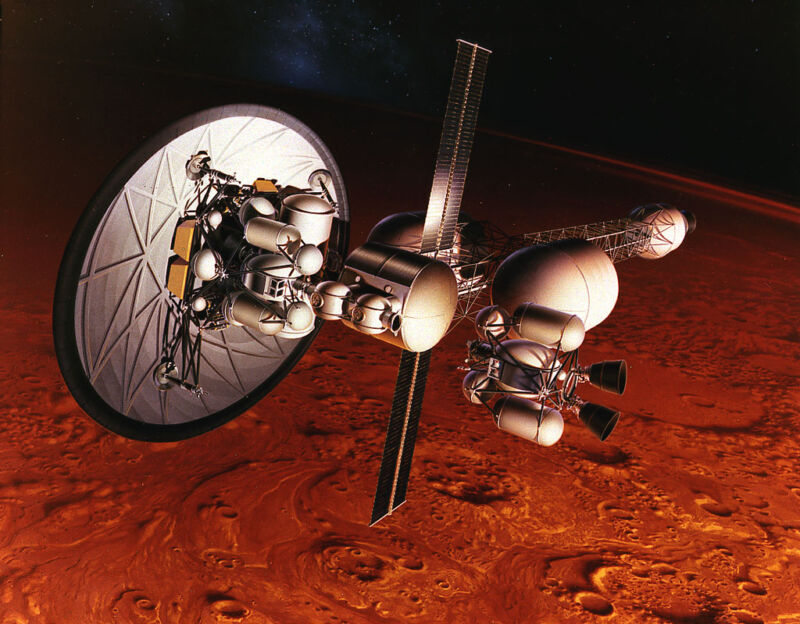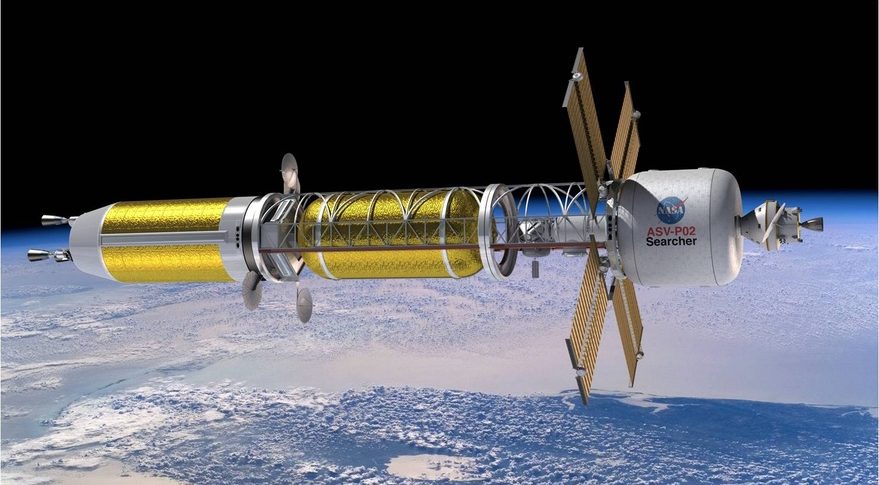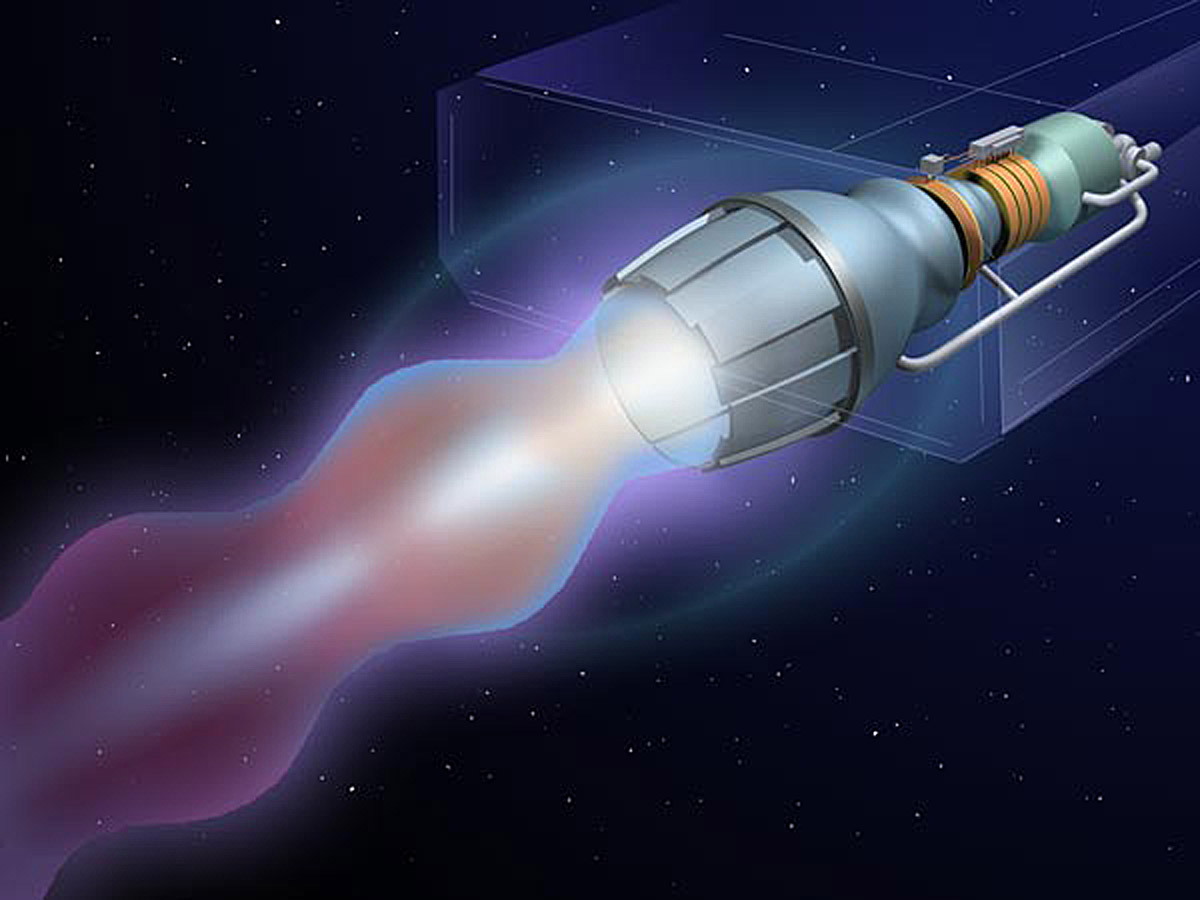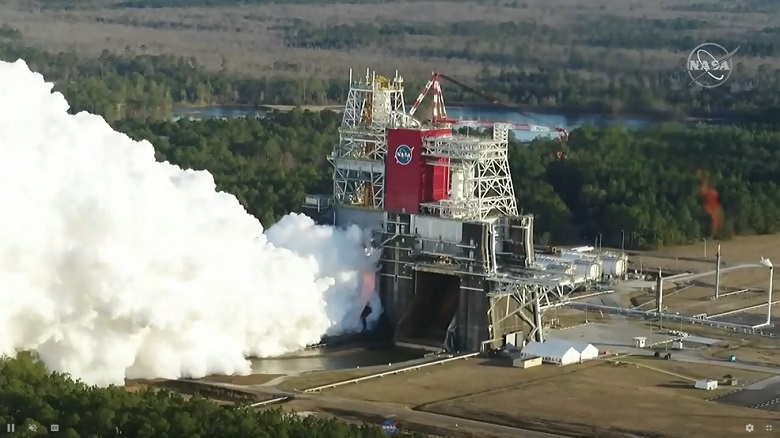
The other day on Habré , an article was published about the difficulties of landing a rover on the surface of the Red Planet. In short, it is monstrously difficult to calculate and implement this landing. It is even more difficult to organize the delivery of people to Mars - colonists or space explorers. But if we talk about regular communication with the Red Planet, then the problem goes to a new level.
The main problem is the lack of a reliable vehicle. SpaceX's rocket and spacecraft are currently being prepared, but it may (and most likely will) take several years before a real flight to Mars. Moreover, the jet thrust of such a rocket is formed as a result of burning liquid fuel. And according to NASA, liquid-fueled rockets are not the most efficient form of transport, nuclear systems are needed.
Rocket fuel is very expensive, and NASA officials say a flight to Mars will require 1,000 to 4,000 tons of fuel. This is several billion US dollars for the launch (although, as I recall, Musk said that fuel is only 5% of the cost of the entire launch). True, all that has been said applies to the agency's own rocket, which is called the Space Launch System. It has been under development for many years, and so far the light has not appeared at the end of this project's tunnel.
Nevertheless, NASA has calculations for a flight to Mars using the SLS super-heavy launch vehicle. And these calculations show that one launch will cost $ 2 billion. And this seems to be just the cost of fuel. 10 launches, which are needed to send enough payload to establish a small station, will cost $ 20 billion.
According to representatives of NASA, the more efficient way to launch is nuclear rockets.
Nuclear-powered space transport
The agency's specialists have prepared a report stating that it is precisely nuclear transport that is required to implement the mission to send a man to Mars in 2039.
“One of the key points of the trip to Mars is that if we want to send people on a regular basis, the most convenient route is just nuclear-powered rockets,” said Bobby Brown, a spokesman for the Jet Propulsion Laboratory.
Unfortunately, the report does not indicate a specific technology - the authors of the document were not asked to do so. In general terms, it is described that there are two options - a nuclear thermal power plant and a nuclear electric motor power plant . NASA, as far as can be understood, favors the first option.

The nuclear system requires much less fuel - about 500 tons instead of the 4000 already mentioned above. If we talk about the operation of such a system, then, according to the agency, the costs will be lower than in the case of operating a fuel rocket.
Now what?
The report says that if NASA plans to use nuclear-powered rockets in 10-15 years, then the development of appropriate technologies should begin now. All this is somewhat strange, since the agency had previously been very active in promoting the idea of flying on the SLS. Now this booster is proposed to be used for flights to the moon.
The most interesting thing about the project is that NASA did not request funds for it, but the US Congress still allocated funds. Moreover, this year the agency immediately received $ 110 million specifically to study the capabilities of nuclear launch systems.
If NASA decides to develop this direction further, then even more funds will be needed. However, the agency believes it can handle all the problems. "This is a technology project that NASA was created to work on, so the whole country expects results from us," said Brown.
What about Starship?
Despite the challenges, the Starship fuel rocket developed by SpaceX is gradually evolving. The test results give hope that the rocket will be able to send people and equipment to Mars within a few years.
Yes, a lot of fuel will be needed, but if flights become regular, then the Musk company plans to create something like an intermediate filling station in low Earth orbit. Other launch vehicles will deliver fuel to certain points, which will be used to fill rockets going to Mars.
At the same time , NASA representatives believe that the Musk project has every chance of being realized, so two parallel flight scenarios to the Red Planet are good.
Is a nuclear missile realistic in the foreseeable future?

To be honest, hardly. Most likely, this report is just a purely theoretical study that will not be continued, at least for now. The fact of the matter is that even NASA has problems with the mature technology of liquid fuel engines.
The same SLS launch vehicle has long raised questions not only from ordinary people, but also from the US government. The project costs a huge heap of money, NASA spends on the SLS project about as much per year as would be enough for 15-20 Falcon Heavy launches. This rocket eats off a very hefty share of the agency's budget, we are talking about billions and billions of dollars.
In 2018, NASA triedtalk about how useful this rocket will be. Say, it can put into orbit "whole loads of large mass" at a time. Other missiles seem to be unable to do this. And everything would be fine, but these are just words, since there is no SLS operation plan yet - simply because such "solid" cargoes do not need to be put into orbit yet.
And, again, we are talking about a technology that has been in existence for several decades. Yes, of course, a super-heavy rocket is different from anything that NASA has used before, but the difference is not dramatic.
And in the case of nuclear missiles, we are talking about completely new technologies that were previously developed only in the form of purely theoretical projects. Even creating a relatively small nuclear-powered rocket for orbital flights will be a challenge. It is difficult to imagine how much money, resources and time it will take to create a huge rocket with a nuclear reactor for a flight to Mars from scratch. The $ 110 million that NASA received to develop this direction is just a drop in the ocean. The total budget for the project will be such that, not like NASA, the whole country will not have enough money.

And we must not forget about the time frame - the same SLS has been developed for many years, the deadlines are constantly disrupted, postponed, etc. And until now, the rocket cannot fly anywhere - just a month ago, SLS was tested, conducting fire tests, but they were unsuccessful. A minute later, the engines shut down due to the failure of one of them.
So nuclear missiles will remain a beautiful theory for now. And if everything goes well for Musk, and his project to fly to Mars is implemented, then the need for "nuclear flights", most likely, will no longer be.
